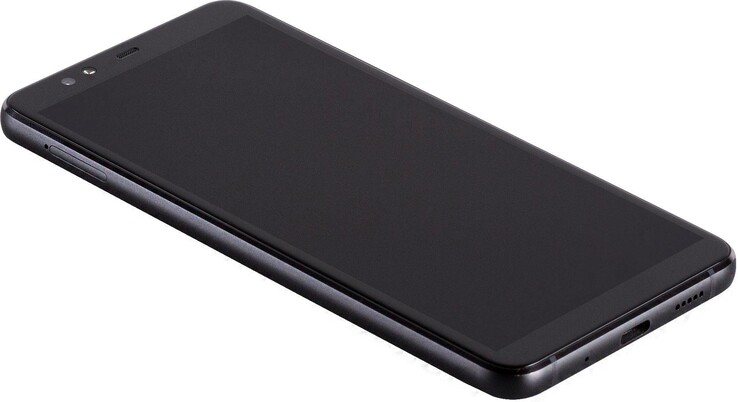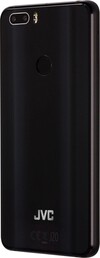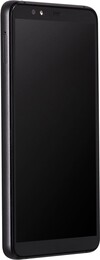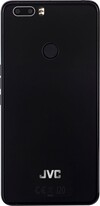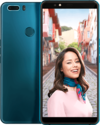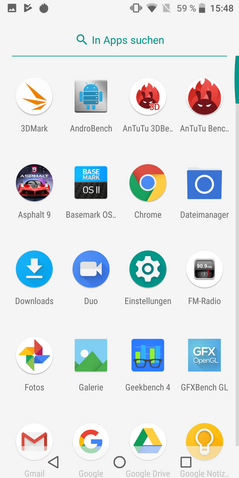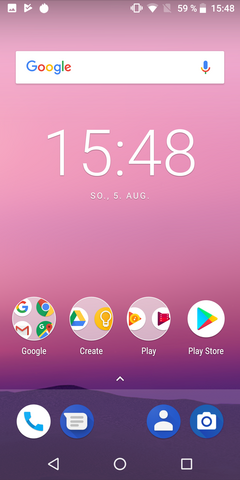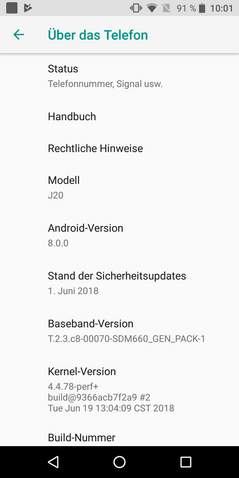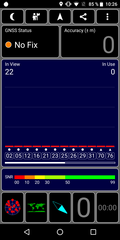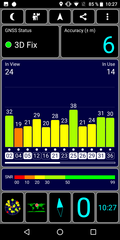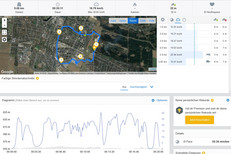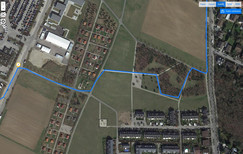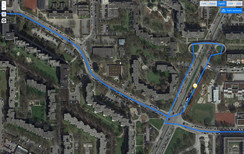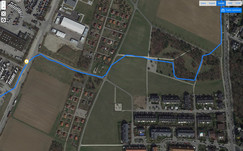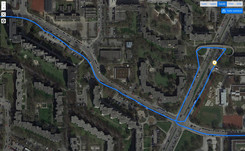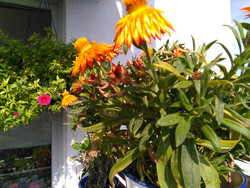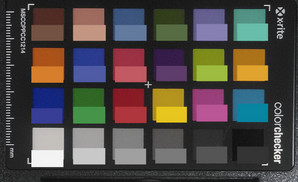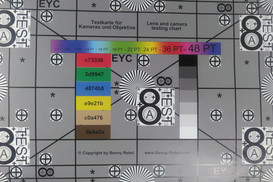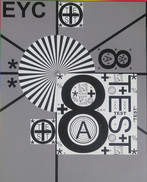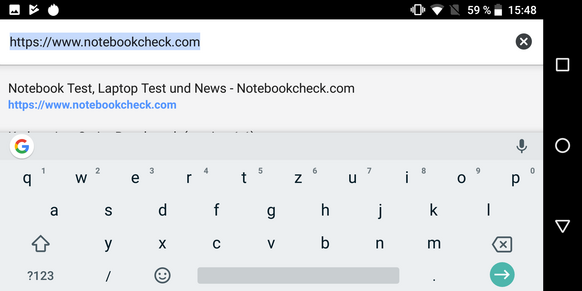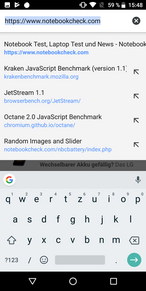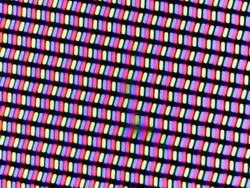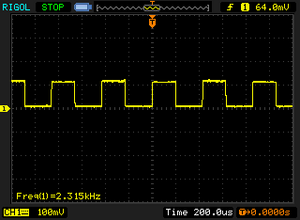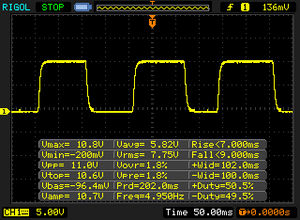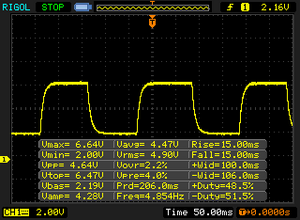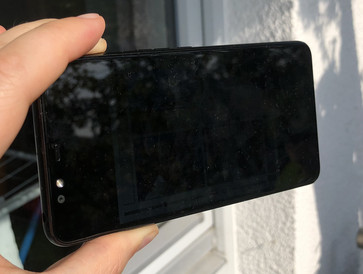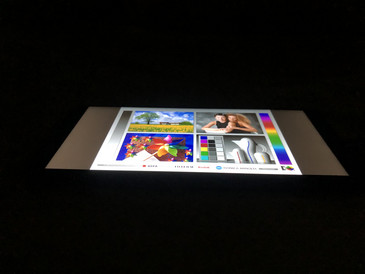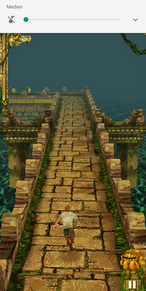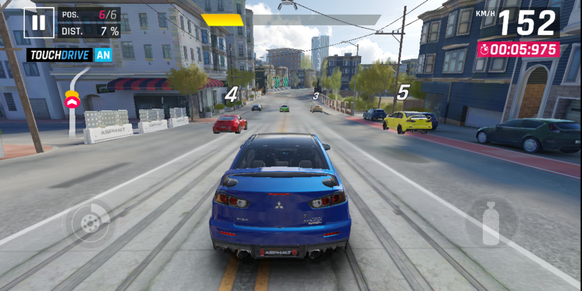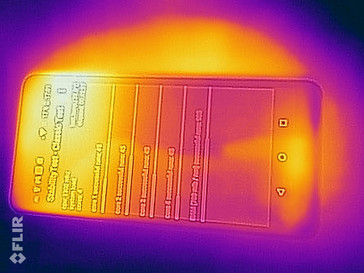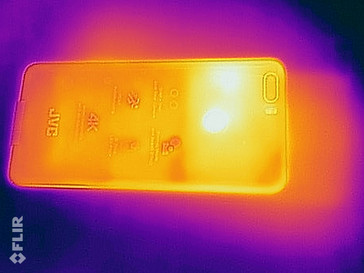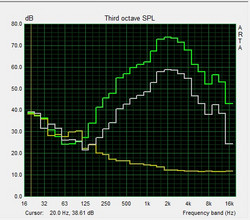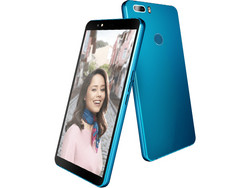JVC J20 Smartphone Review
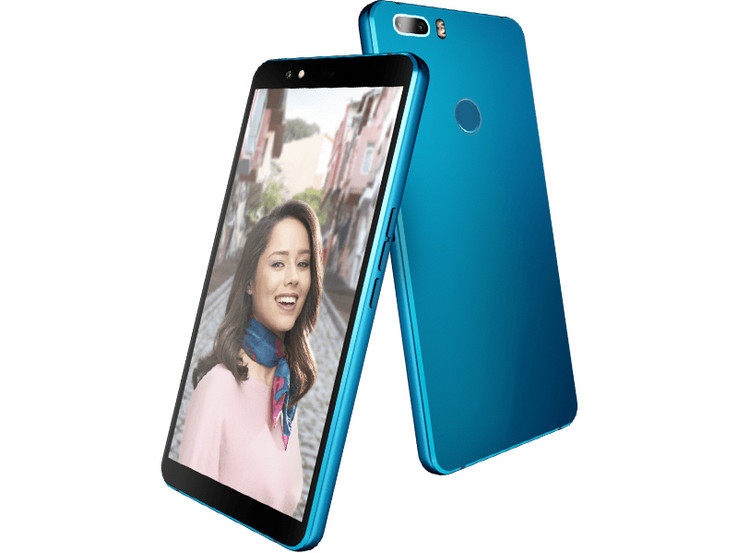
The Japanese manufacturer JVC is known well in the tech world: You can get camcorders, radios and many other audio devices from the manufacturer. JVC has never released a smartphone in the West before, but this changes with the JVC J20. Here, JVC gets some help from the Turkish manufacturer Vestel. The JVC J20 is not a cheap smartphone but is a mid-range device with respectable hardware.
In this price range, the JVC J20 will have to compete with other mid-range smartphones such as the LG Q7 Plus, Nokia 7 Plus, Samsung Galaxy A8 and the BQ Aquaris X2 Pro. In this review, we shall examine whether the Turkish/Japanese smartphone can go head-to-head with the competition.
Case – The JVC J20 has a slick glass case
You can expect to get a very nice case from a 300-Euro-plus (~$343-plus) smartphone. Here, JVC delivers a very good case: Fans of a somewhat angular design, which can be seen in Sony’s Xperia smartphones, will be very happy with the JVC J20. The edges are slightly rounded and have a chrome finish, which makes the smartphone look very premium. The back has been clearly inspired by current Honor smartphones. It consists of multiple layers of glass, which create a color-shimmering effect by way of light refraction. This cannot be seen in the marketing material. Currently, only the black variant is available in Germany. The gold and the blue variants are coming soon.
The smartphone has a weight of 158 grams (0.35 lbs), which is not very heavy. Nevertheless, it feels very premium in the hand. The JVC J20 uses a display with an 18:9 aspect ratio. The bezels are similar in size to other smartphones in this price range. The overall quality is okay for a device with such a price tag. Applying a lot of pressure to the back and the front of the device leads to a slight rippling effect on the screen. When twisting the device, a slight creaking sound is audible.
Connectivity – Enough storage space
The smartphone can be charged or connected to a PC via the USB C port on the bottom of the device. USB OTG is supported, but an NFC chip is not provided. The manufacturer claims support for VoLTE, VoWi-Fi and LTE video calling.
The JVC J20 has 4 GB of RAM and 64 GB of internal storage, which is usual for a device in this price range. The J20 is a single-SIM smartphone. The storage space can be increased with the help of a MicroSD card. However, SD cards cannot be formatted as internal storage, which means apps cannot be stored on them.
Software – Stock Android with up-to-date security patches
Communication and GPS – The JVC smartphone with 802.11 ac and fast LTE
In the more premium mid-range smartphones, support for 802.11 ac is a must, and the JVC smartphone fulfills this requirement. However, the transfer rates that we measured with our reference-grade router Linksys EA8500 are somewhat lower than those of other comparable devices. In particular, the BQ Aquaris X2 Pro is much faster at transferring data via Wi-Fi. The LG Q7 Plus, which only supports 802.11 n, is proof positive that transfer speeds can be significantly lower.
In terms of LTE, the JVC J20 offers good speeds of up to 600 Mb/s. However, it covers only the absolutely necessary LTE bands for the Western countries. Those who travel abroad are likely to end up in places where the JVC J20 cannot utilize local LTE networks. In the German D2 networks, the reception is very good, even inside buildings. We get at least three out of four bars most of the time.
| Networking | |
| iperf3 transmit AX12 | |
| BQ Aquaris X2 Pro | |
| Nokia 7 Plus | |
| Samsung Galaxy A8 2018 | |
| JVC J20 | |
| LG Q7 Plus | |
| iperf3 receive AX12 | |
| BQ Aquaris X2 Pro | |
| Samsung Galaxy A8 2018 | |
| Nokia 7 Plus | |
| JVC J20 | |
| LG Q7 Plus | |
The JVC J20 cannot acquire the user’s location inside a concrete building. Outside, it takes the JVC smartphone a few seconds to determine the user’s location with a margin of error of six meters, which is a good result.
In order to determine how accurate our review device is when it comes to geo-location, we take it with us on a bike ride. During this ride, we are also accompanied by the professional navigator Garmin Edge 500. All in all, the JVC J20 does a good job here: Occasionally, the smartphone takes shortcuts that we did not take and places us outside of our traffic lane, but overall the JVC J20 is a rather good navigator. Geo-location works very well in Google Maps and the compass points in the right direction.
Telephony and Call Quality – JVC smartphone with average call quality
The smartphone features the standard Android phone app. Therefore, Android veterans should be right at home with this app.
The ear-speaker offers an okay sound quality. The interlocutor is easy to understand and the volume is also high enough. Having said that, the overall sound reproduction is not very good. The caller’s voice becomes tinny when they speak loudly and the caller is rather difficult to understand when they speak quietly. The sound reproduction in speaker mode also leaves a lot to be desired. Here, the call partner sounds as if they are talking on an old fixed-line telephone and not on a modern smartphone with HD sound quality.
Cameras – Front-facing camera okay, main camera so-so
There is a dual-camera setup on the back of the smartphone. The main camera has a resolution of 16 MP and features phase detection autofocus and a dual LED flash. The second sensor has a resolution of 5 MP and is used for depth detection, which works very well. Under normal lighting conditions, the image quality is okay. However, bright areas quickly become overblown. The detail reproduction is very good, and photos rarely look muddy. The camera does a very good job for a smartphone in this price range. That being said, the images appear somewhat dim and blurry when shot under low-light conditions.
Video can be recorded in 4K. However, exposure compensation and autofocus do not work very well: The exposure will have to be corrected after the fact and the focus also has to be adjusted manually if you want it to be correct. Video can also be recorded in quick motion (in this case, video is simply played back faster) and slow motion, and here there are two modes: 4x in 720p and 2x in 1080p.
The fixed-focus front-facing camera takes very colorful and sharp pictures.
In our lab, we examine the color accuracy of the JVC J20's camera under controlled lighting conditions. Here, the image is not 100% sharp and the colors look too dim. All in all, the image quality is fine for a mid-range smartphone, but it is not exceptional by any means.
Accessories and Warranty – The JVC J20 comes with a two-year warranty
The box contains a fast charger, a USB cable, a SIM removal tool and in-ear headphones. The manufacturer offers additional accessories on its website. However, these accessories are currently unavailable.
The JVC smartphone has a 24-month warranty. Please see our Guarantees, Return policies and Warranties FAQ for country-specific information.
Input Devices and Handling – Slow fingerprint sensor
The keyboard comes from Google. Therefore, typing messages and emails is easy.
The touchscreen responds to inputs reliably even at the edges. All in all, it is quite accurate. The hardware buttons on the right side are somewhat small and not optimal to use, because they are located too close to each other. The buttons have a clear actuation point. The soft keys at the bottom of the screen are used to navigate through the menus.
There is a fingerprint scanner on the back, which does not work very reliably. Moreover, it unlocks the smartphone with a slight delay.
Display – JVC smartphone with a dim screen
The JVC J20 comes with a 5.65-inch screen. The BQ Aquaris X2 Pro has the same exact screen size. Both devices also have the same resolution of 2160x1080 and the same aspect ratio of 18:9. This means that there are black bars on the screen when watching traditional 16:9 content. However, this aspect ratio allows for slimmer devices. At 426 cd/m², the JVC J20 has the dimmest display in our comparison group. The display has a mediocre brightness distribution of 82%. This is why solid colors do not appear uniform.
| |||||||||||||||||||||||||
Brightness Distribution: 82 %
Contrast: 775:1 (Black: 0.53 cd/m²)
ΔE ColorChecker Calman: 8.84 | ∀{0.5-29.43 Ø4.78}
ΔE Greyscale Calman: 10.7 | ∀{0.09-98 Ø5}
99.1% sRGB (Calman 2D)
Gamma: 2.433
CCT: 10717 K
| JVC J20 IPS, 2160x1080, 5.7" | Samsung Galaxy A8 2018 Super AMOLED, 2220x1080, 5.6" | LG Q7 Plus IPS, 2160x1080, 5.5" | Nokia 7 Plus IPS, 2160x1080, 6" | BQ Aquaris X2 Pro LTPS, 2160x1080, 5.7" | |
|---|---|---|---|---|---|
| Screen | 37% | 13% | 53% | 42% | |
| Brightness middle (cd/m²) | 411 | 541 32% | 431 5% | 458 11% | 675 64% |
| Brightness (cd/m²) | 426 | 538 26% | 419 -2% | 463 9% | 650 53% |
| Brightness Distribution (%) | 82 | 96 17% | 89 9% | 92 12% | 92 12% |
| Black Level * (cd/m²) | 0.53 | 0.58 -9% | 0.22 58% | 0.46 13% | |
| Contrast (:1) | 775 | 743 -4% | 2082 169% | 1467 89% | |
| Colorchecker dE 2000 * | 8.84 | 5.8 34% | 6.2 30% | 4 55% | 5.9 33% |
| Colorchecker dE 2000 max. * | 15.08 | 10.1 33% | 7.4 51% | 9.5 37% | |
| Greyscale dE 2000 * | 10.7 | 2.7 75% | 6.2 42% | 4.7 56% | 6.6 38% |
| Gamma | 2.433 90% | 2.07 106% | 2.26 97% | 2.19 100% | 2.36 93% |
| CCT | 10717 61% | 6570 99% | 8064 81% | 7425 88% | 7846 83% |
* ... smaller is better
Screen Flickering / PWM (Pulse-Width Modulation)
| Screen flickering / PWM detected | 2315 Hz | ≤ 15 % brightness setting | |
The display backlight flickers at 2315 Hz (worst case, e.g., utilizing PWM) Flickering detected at a brightness setting of 15 % and below. There should be no flickering or PWM above this brightness setting. The frequency of 2315 Hz is quite high, so most users sensitive to PWM should not notice any flickering. In comparison: 53 % of all tested devices do not use PWM to dim the display. If PWM was detected, an average of 8111 (minimum: 5 - maximum: 343500) Hz was measured. | |||
We observed PWM flickering at 15% brightness and lower. Because the screen flickers with a very high frequency, even susceptible individuals should not experience headaches or eye strain. The black value and the contrast ratio are quite mediocre, which is why colors seem washed-out and the blacks appear grayish.
We use a spectrophotometer running SpectraCal's CalMAN software to examine the color accuracy more closely. The spectrophotometer reveals a strong bluish cast. It can be ameliorated via Android’s blue-light filter. No other color settings are available. The colors deviate a lot from the sRGB spectrum. Those who need a color-accurate display should look elsewhere.
Display Response Times
| ↔ Response Time Black to White | ||
|---|---|---|
| 16 ms ... rise ↗ and fall ↘ combined | ↗ 7 ms rise | |
| ↘ 9 ms fall | ||
| The screen shows good response rates in our tests, but may be too slow for competitive gamers. In comparison, all tested devices range from 0.1 (minimum) to 240 (maximum) ms. » 36 % of all devices are better. This means that the measured response time is better than the average of all tested devices (20.2 ms). | ||
| ↔ Response Time 50% Grey to 80% Grey | ||
| 30 ms ... rise ↗ and fall ↘ combined | ↗ 15 ms rise | |
| ↘ 15 ms fall | ||
| The screen shows slow response rates in our tests and will be unsatisfactory for gamers. In comparison, all tested devices range from 0.165 (minimum) to 636 (maximum) ms. » 39 % of all devices are better. This means that the measured response time is similar to the average of all tested devices (31.6 ms). | ||
Performance – Typical for a mid-range device
Thanks to the Qualcomm Snapdragon 630, the JVC J20 can keep up with other mid-range smartphones. However, some competitors, such as the Nokia 7 Plus and the BQ Aquaris X2 Pro, offer considerably more performance. Their CPUs are almost 90% faster in the single-core portion of the Geekbench benchmark. Both devices are also far ahead of the JVC smartphone with the Qualcomm Adreno 508 in the gaming benchmarks. Nevertheless, the JVC smartphone performs just as well as the very popular Samsung Galaxy A8.
| AnTuTu v6 - Total Score (sort by value) | |
| JVC J20 | |
| Samsung Galaxy A8 2018 | |
| LG Q7 Plus | |
| Nokia 7 Plus | |
| BQ Aquaris X2 Pro | |
| Average Qualcomm Snapdragon 630 (44128 - 73617, n=12) | |
| AnTuTu v7 - Total Score (sort by value) | |
| JVC J20 | |
| Samsung Galaxy A8 2018 | |
| LG Q7 Plus | |
| Nokia 7 Plus | |
| BQ Aquaris X2 Pro | |
| Average Qualcomm Snapdragon 630 (87300 - 90674, n=11) | |
| PCMark for Android | |
| Work performance score (sort by value) | |
| JVC J20 | |
| Samsung Galaxy A8 2018 | |
| LG Q7 Plus | |
| Nokia 7 Plus | |
| BQ Aquaris X2 Pro | |
| Average Qualcomm Snapdragon 630 (4948 - 6264, n=13) | |
| Work 2.0 performance score (sort by value) | |
| JVC J20 | |
| Samsung Galaxy A8 2018 | |
| LG Q7 Plus | |
| Nokia 7 Plus | |
| BQ Aquaris X2 Pro | |
| Average Qualcomm Snapdragon 630 (4636 - 5987, n=12) | |
| GFXBench 3.0 | |
| on screen Manhattan Onscreen OGL (sort by value) | |
| JVC J20 | |
| Samsung Galaxy A8 2018 | |
| LG Q7 Plus | |
| Nokia 7 Plus | |
| BQ Aquaris X2 Pro | |
| Average Qualcomm Snapdragon 630 (11 - 15, n=13) | |
| Average of class Smartphone (18 - 166, n=159, last 2 years) | |
| 1920x1080 1080p Manhattan Offscreen (sort by value) | |
| JVC J20 | |
| Samsung Galaxy A8 2018 | |
| LG Q7 Plus | |
| Nokia 7 Plus | |
| BQ Aquaris X2 Pro | |
| Average Qualcomm Snapdragon 630 (13 - 14, n=13) | |
| Average of class Smartphone (12 - 606, n=158, last 2 years) | |
| GFXBench 3.1 | |
| on screen Manhattan ES 3.1 Onscreen (sort by value) | |
| JVC J20 | |
| Samsung Galaxy A8 2018 | |
| LG Q7 Plus | |
| Nokia 7 Plus | |
| BQ Aquaris X2 Pro | |
| Average Qualcomm Snapdragon 630 (5.3 - 11, n=13) | |
| Average of class Smartphone (11 - 166, n=159, last 2 years) | |
| 1920x1080 Manhattan ES 3.1 Offscreen (sort by value) | |
| JVC J20 | |
| Samsung Galaxy A8 2018 | |
| LG Q7 Plus | |
| Nokia 7 Plus | |
| BQ Aquaris X2 Pro | |
| Average Qualcomm Snapdragon 630 (5.2 - 10, n=13) | |
| Average of class Smartphone (8.4 - 413, n=158, last 2 years) | |
The JVC smartphone does not shine when it comes to Internet-surfing: Here, the comparison devices are considerably faster. However, in practice things are not as tragic: Websites load very fast and images do not take a lot of time to load.
| JetStream 1.1 - Total Score | |
| Nokia 7 Plus (Chrome 60) | |
| BQ Aquaris X2 Pro (Chrome 67) | |
| Samsung Galaxy A8 2018 (Chrome 64.0.3282.137) | |
| Average Qualcomm Snapdragon 630 (27.4 - 30.8, n=12) | |
| JVC J20 (Chrome 68) | |
| LG Q7 Plus (Chrome 67) | |
| Octane V2 - Total Score | |
| Average of class Smartphone (2228 - 121337, n=201, last 2 years) | |
| Nokia 7 Plus (Chrome 60) | |
| BQ Aquaris X2 Pro (Chrome 67) | |
| Samsung Galaxy A8 2018 (Chrome 64.0.3282.137) | |
| JVC J20 (Chrome 68) | |
| Average Qualcomm Snapdragon 630 (4398 - 5202, n=13) | |
| LG Q7 Plus (Chrome 67) | |
| Mozilla Kraken 1.1 - Total | |
| LG Q7 Plus (Chrome 67) | |
| Average Qualcomm Snapdragon 630 (8396 - 10257, n=13) | |
| JVC J20 (Chrome 68) | |
| Samsung Galaxy A8 2018 (Chrome 64.0.3282.137) | |
| BQ Aquaris X2 Pro (Chrome 67) | |
| Nokia 7 Plus (Chrome 60) | |
| Average of class Smartphone (257 - 28190, n=156, last 2 years) | |
| WebXPRT 2015 - Overall | |
| Nokia 7 Plus (Chrome 60) | |
| BQ Aquaris X2 Pro (Chrome 67) | |
| Samsung Galaxy A8 2018 (Chrome 64.0.3282.137) | |
| Average Qualcomm Snapdragon 630 (86 - 117, n=10) | |
| LG Q7 Plus (Chrome 67) | |
* ... smaller is better
Our review device does very well in terms of write and read rates: Both the SD card reader and the internal eMMC flash memory perform as expected. We use our reference-grade MicroSD card Toshiba Exceria Pro M501 to test the SD card reader.
| JVC J20 | Samsung Galaxy A8 2018 | LG Q7 Plus | Nokia 7 Plus | BQ Aquaris X2 Pro | Average 64 GB eMMC Flash | Average of class Smartphone | |
|---|---|---|---|---|---|---|---|
| AndroBench 3-5 | 22% | 5% | 36% | 23% | 70% | 1786% | |
| Sequential Read 256KB (MB/s) | 270.6 | 299.9 11% | 235.9 -13% | 283.1 5% | 280.8 4% | 277 ? 2% | 2216 ? 719% |
| Sequential Write 256KB (MB/s) | 199.7 | 104.2 -48% | 186.6 -7% | 211.6 6% | 204.8 3% | 178.4 ? -11% | 1837 ? 820% |
| Random Read 4KB (MB/s) | 58.3 | 82.6 42% | 35.8 -39% | 54.7 -6% | 51.3 -12% | 60.7 ? 4% | 294 ? 404% |
| Random Write 4KB (MB/s) | 6.3 | 14.69 133% | 11.91 89% | 19.62 211% | 15.43 145% | 33.8 ? 437% | 334 ? 5202% |
| Sequential Read 256KB SDCard (MB/s) | 82.8 ? | 77.9 ? -6% | 81.4 ? -2% | 82.2 -1% | 83.3 ? 1% | 77.4 ? -7% | |
| Sequential Write 256KB SDCard (MB/s) | 63 ? | 62.3 ? -1% | 62.2 ? -1% | 62.3 -1% | 61.1 ? -3% | 58.3 ? -7% |
Gaming – The JVC J20 is good for gaming
The JVC J20 is absolutely suitable for gaming, and you do not have to lower your expectations too much: The newly-released racing game Asphalt 9 runs without any problems even on high settings. We use Temple Run to see how well the motion sensor and the touchscreen work in games. Here, we have no complaints, because both work very well. The GPU supports all current APIs, which means that it is quite future-proof.
Those who want to play the latest titles at a constant 60 FPS should get a more powerful, and therefore more expensive, smartphone.
Emissions – The speaker does not impress
Temperature
Under load, the surface temperatures reach up to 44.4 °C (111.9 °F) on the front of the device, which is noticeably hot, especially when you carry the smartphone in your pants pocket. The JVC J20 gets warm even when idle. However, it never reaches critical temperatures.
(±) The maximum temperature on the upper side is 44.4 °C / 112 F, compared to the average of 35.2 °C / 95 F, ranging from 21.9 to 247 °C for the class Smartphone.
(±) The bottom heats up to a maximum of 41.8 °C / 107 F, compared to the average of 34 °C / 93 F
(±) In idle usage, the average temperature for the upper side is 33.5 °C / 92 F, compared to the device average of 32.9 °C / 91 F.
Speakers
The mono-speaker on the bottom can get very loud. However, the sound quality is not very good: Even though the lower mids are reproduced quite well, the highs are all out of whack. This becomes a problem when you turn the volume up very high. It is okay if you want to listen to a song or two, but if you want to listen to music for quite some time then you had better get yourself a pair of headphones or external speakers, which can be connected to the smartphone via the 3.5-mm audio jack or Bluetooth. Both the headphone jack and Bluetooth work very well and deliver good sound quality.
JVC J20 audio analysis
(±) | speaker loudness is average but good (81 dB)
Bass 100 - 315 Hz
(-) | nearly no bass - on average 60.9% lower than median
(+) | bass is linear (0% delta to prev. frequency)
Mids 400 - 2000 Hz
(-) | nearly no mids - on average 60.9% lower than median
(+) | mids are linear (0% delta to prev. frequency)
Highs 2 - 16 kHz
(-) | nearly no highs - on average 60.9% lower than median
(+) | highs are linear (0% delta to prev. frequency)
Overall 100 - 16.000 Hz
(-) | overall sound is not linear (121.1% difference to median)
Compared to same class
» 90% of all tested devices in this class were better, 8% similar, 2% worse
» The best had a delta of 11%, average was 35%, worst was 134%
Compared to all devices tested
» 97% of all tested devices were better, 2% similar, 1% worse
» The best had a delta of 4%, average was 24%, worst was 134%
Samsung Galaxy A8 2018 audio analysis
(+) | speakers can play relatively loud (85 dB)
Bass 100 - 315 Hz
(-) | nearly no bass - on average 28.7% lower than median
(±) | linearity of bass is average (9.6% delta to prev. frequency)
Mids 400 - 2000 Hz
(+) | balanced mids - only 2.8% away from median
(+) | mids are linear (5.3% delta to prev. frequency)
Highs 2 - 16 kHz
(+) | balanced highs - only 4.6% away from median
(+) | highs are linear (5.9% delta to prev. frequency)
Overall 100 - 16.000 Hz
(±) | linearity of overall sound is average (20.2% difference to median)
Compared to same class
» 33% of all tested devices in this class were better, 9% similar, 58% worse
» The best had a delta of 11%, average was 35%, worst was 134%
Compared to all devices tested
» 52% of all tested devices were better, 8% similar, 40% worse
» The best had a delta of 4%, average was 24%, worst was 134%
Battery Life – The JVC J20 lasts for a long time
Energy Consumption
The power draw of the JVC J20 peaks at 5.9 watts, which is a pretty low result. However, when idle, the power consumption is slightly elevated when compared to the competition. The smartphone draws some power in standby mode, which means that it will discharge faster than the competing devices.
| Off / Standby | |
| Idle | |
| Load |
|
Key:
min: | |
| JVC J20 3400 mAh | Samsung Galaxy A8 2018 3000 mAh | LG Q7 Plus 3000 mAh | Nokia 7 Plus 3800 mAh | BQ Aquaris X2 Pro 3100 mAh | Average Qualcomm Snapdragon 630 | Average of class Smartphone | |
|---|---|---|---|---|---|---|---|
| Power Consumption | 26% | 8% | -1% | -4% | 9% | -20% | |
| Idle Minimum * (Watt) | 1 | 0.67 33% | 1 -0% | 0.65 35% | 0.63 37% | 0.732 ? 27% | 0.848 ? 15% |
| Idle Average * (Watt) | 1.6 | 1.02 36% | 1.57 2% | 1.76 -10% | 2.16 -35% | 1.835 ? -15% | 1.434 ? 10% |
| Idle Maximum * (Watt) | 2.8 | 1.1 61% | 1.64 41% | 1.78 36% | 2.18 22% | 2.16 ? 23% | 1.618 ? 42% |
| Load Average * (Watt) | 4 | 3.86 3% | 4.1 -3% | 4.47 -12% | 4.48 -12% | 3.81 ? 5% | 7.01 ? -75% |
| Load Maximum * (Watt) | 5.9 | 5.97 -1% | 6.02 -2% | 9.13 -55% | 7.87 -33% | 5.62 ? 5% | 11.3 ? -92% |
* ... smaller is better
Battery Life
With 3400 mAh, the battery of the JVC J20 has a somewhat bigger capacity than most of the competition. This is reflected in the battery runtimes: The JVC J20 lasts 12 h 6 m in our Wi-Fi test. This is a very good result.
The smartphone supports Quick Charge and takes less than two hours to fully charge with the included charger.
| JVC J20 3400 mAh | Samsung Galaxy A8 2018 3000 mAh | LG Q7 Plus 3000 mAh | Nokia 7 Plus 3800 mAh | BQ Aquaris X2 Pro 3100 mAh | |
|---|---|---|---|---|---|
| Battery runtime | -11% | -15% | -7% | -17% | |
| WiFi v1.3 (h) | 12.1 | 10.8 -11% | 10.3 -15% | 11.2 -7% | 10.1 -17% |
| Reader / Idle (h) | 25.8 | 16.3 | 28.4 | 22.9 | |
| H.264 (h) | 15.1 | 7.6 | 11.8 | 11 | |
| Load (h) | 4.3 | 3.8 | 2.6 | 2.4 |
Pros
Cons
Verdict – Beautiful mid-range smartphone
There are two possibilities for a new brand in the smartphone market: Either you come up with a completely new concept or you make a solid smartphone and try to win buyers over with it. Vestel and JVC opted for the latter approach. With the JVC J20, they bring a rock-solid smartphone to the market. The advantage for the buyers: There are almost no real shortcomings. The color-inaccurate display and the mediocre speaker are the only blemishes. The battery life, the quality of the front-facing camera and the connectivity options are quite impressive. Moreover, the JVC J20 comes with stock Android without any bloatware.
JVC’s first smartphone for the Western market is a solid mid-range device. The battery life and the case are especially impressive.
Another advantage: There have already been reductions in the price of the JVC J20 – which make the JVC smartphone look like quite a bargain.
JVC J20
- 08/06/2018 v6 (old)
Florian Wimmer




